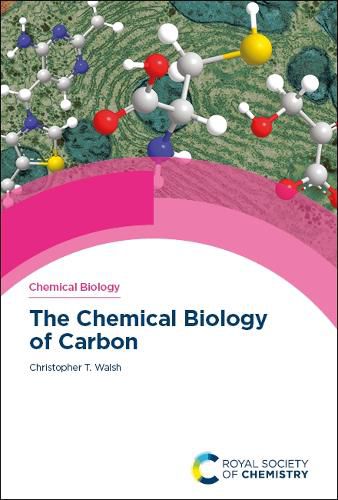Readings Newsletter
Become a Readings Member to make your shopping experience even easier.
Sign in or sign up for free!
You’re not far away from qualifying for FREE standard shipping within Australia
You’ve qualified for FREE standard shipping within Australia
The cart is loading…






Building upon the previous volumes, The Chemical Biology of Sulfur, The Chemical Biology of Phosphorus, and The Chemical Biology of Nitrogen, this book examines the organic chemistry of life, The Chemical Biology of Carbon. It examines chemical biology open to carbon-containing natural metabolites that allow both retrospective and predictive behaviours of both biosynthetic and degradative metabolism in primary and secondary pathways. This book also notes the centrality of a core set of heterocycles in metabolites and coenzyme forms of vitamins and how that chemistry enables life. The organic chemical fundamental considerations are always tied to specific metabolites and metabolic transformations. This context makes this volume not a classical organic or even bioorganic approach to organic chemistry in vivo but instead a unique analysis of how the rules and reactivities of organic chemistry underlie the organic chemistry of life. The Chemical Biology of Carbon is an ideal reference and guide for medicinal chemists, chemical biologists, organic chemists as well as postgraduate, graduate and advanced undergraduate students in these areas and related disciplines.
$9.00 standard shipping within Australia
FREE standard shipping within Australia for orders over $100.00
Express & International shipping calculated at checkout
Building upon the previous volumes, The Chemical Biology of Sulfur, The Chemical Biology of Phosphorus, and The Chemical Biology of Nitrogen, this book examines the organic chemistry of life, The Chemical Biology of Carbon. It examines chemical biology open to carbon-containing natural metabolites that allow both retrospective and predictive behaviours of both biosynthetic and degradative metabolism in primary and secondary pathways. This book also notes the centrality of a core set of heterocycles in metabolites and coenzyme forms of vitamins and how that chemistry enables life. The organic chemical fundamental considerations are always tied to specific metabolites and metabolic transformations. This context makes this volume not a classical organic or even bioorganic approach to organic chemistry in vivo but instead a unique analysis of how the rules and reactivities of organic chemistry underlie the organic chemistry of life. The Chemical Biology of Carbon is an ideal reference and guide for medicinal chemists, chemical biologists, organic chemists as well as postgraduate, graduate and advanced undergraduate students in these areas and related disciplines.